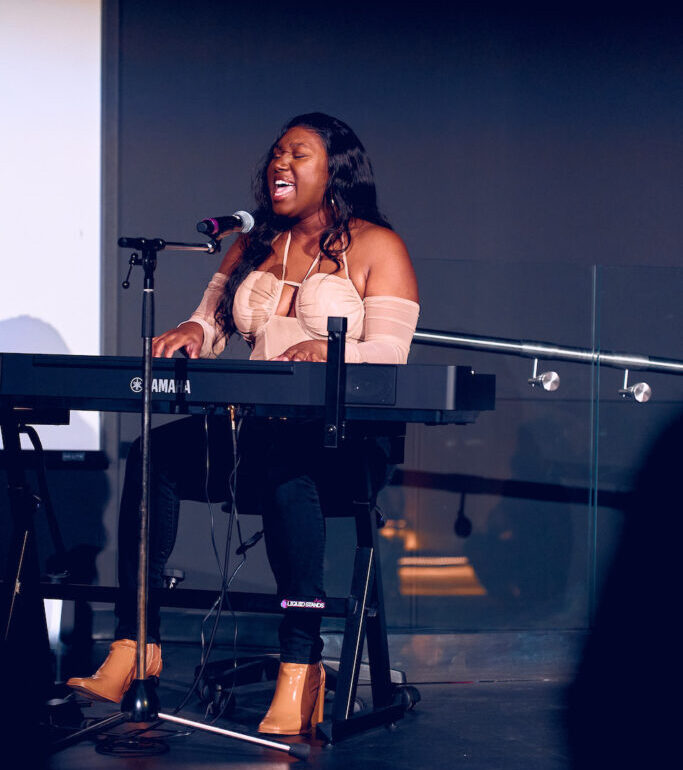It’s the evening of Feb. 4 at the Canadian Science and Technology Museum. The space boasts more than 700 artifacts, ranging from telescopes to vehicles, cameras, and other exhibitions that map out the country’s history of science, innovation, and technology.
But the artwork in the spotlight today isn’t locked behind glass cases. It’s in the pearl-adorned cornrows, the Bantu knots, the afros, and the intricate braid patterns filling the museum space.
“Crépu: Our DNA” returned for the second time since its first event in 2023, presented by Sharlène Clarke’s Hors Pair Social and The Moving Art Gallery in partnership with Ingenium: Canada’s Museums of Science and Innovation.
Sandra Ngenge Dusabe, the founder of The Moving Art Gallery, calls events like this one “symbolic.”
“Representation is another form of love, community, and openness,” she says, sporting braids with wooden beads dangling at the tips. “‘Crépu’ as a concept has extended itself to be not just only about specifically hair but about the communities, the stories, and the memories that come from growing up and learning how to take care of your hair.”
Hosted by multidisciplinary creative Yanaminah Thullah, the evening began with a live hair demonstration and workshop on hydrating curls by Paula Whitelocke from Curly Hair Designs. That was followed by a hair art runway, two presentations by Ingenium’s Sarah Jaworski and Alexa Lepera, and Shadaei B. Miclisse from Atelier en Boucle.
Shortly after, the stage light of the darkened auditorium beamed on R&B/Neo-soul singer DORESSA on the keys, her voice filling up the room in a rendition of India.Arie’s “I Am Not My Hair.” Then MayaSpoken, two-time champion of OG500—Ottawa’s largest poetry slam—commanded the stage, performing two powerful pieces on Blackness and hair.
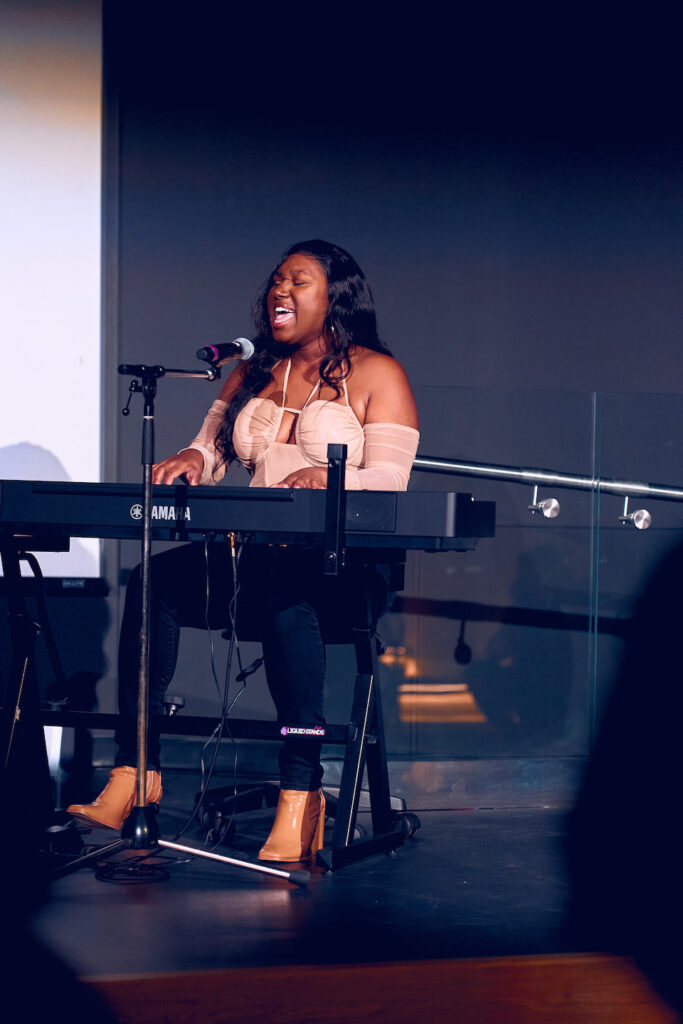
DORESSA at Crépu, Feb. 4, 2024. Photo: Tani Olorunyomi
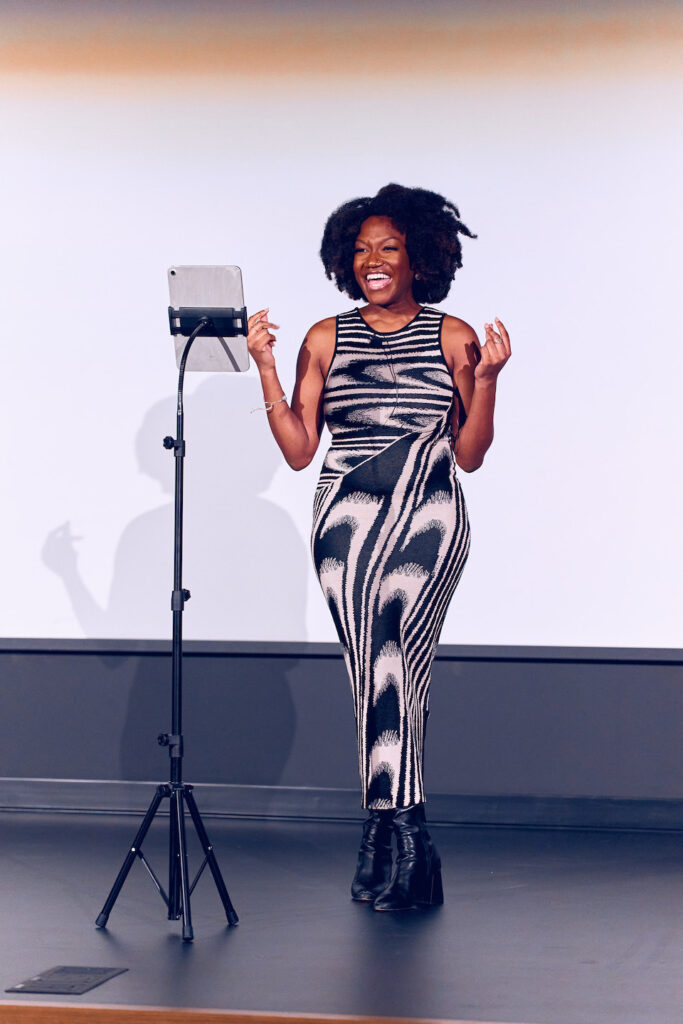
MayaSpoken at Crépu, Feb. 4, 2024. Photo: Tani Olorunyomi
Civil rights activist and entrepreneur Viola Desmond shaped Black beauty culture in Canada in the 1940s. Desmond was inspired by Madam CJ Walker and even studied at one of her beauty schools in New York, as the ones in Halifax did not admit Black women.
In 1937, Desmond returned to Halifax and opened Vi’s Studio of Beauty Culture on Gottingen Street, a segregated African Canadian community, according to Cheryl Thompson’s book, Beauty in a Box: Detangling the Roots of Canada’s Black Beauty Culture.
Beyond the beauty parlour, Desmond sold hair products and opened a beauty school, attracting Black women from Nova Scotia, New Brunswick, and Quebec.
Even though Desmond, light skinned and biracial, fit the “respectable” Black woman stereotype with her well-kept hair and appearance, she was jailed and charged for refusing to move from her seat in the whites-only section at the Roseland Theatre in New Glasgow, Nova Scotia.
Black hair and Black bodies have always been politicized. As Thompson writes, Black beauty politics are rooted in “Black aesthetic practices that occurred during transatlantic slavery, when Black bodies were imbued with a visible, corporeal difference such that hair and skin became politicized aesthetics, irrespective of Black women’s intentions.”
Today’s hairstylists—more accurately, hair artists—are challenging these politicized views of Black hair, whether due to length, texture, or style.
At “Crépu,” three hair artists, Charifa Labarang, Solit Isak, and Delize Scott, presented their hair designs on the runway.
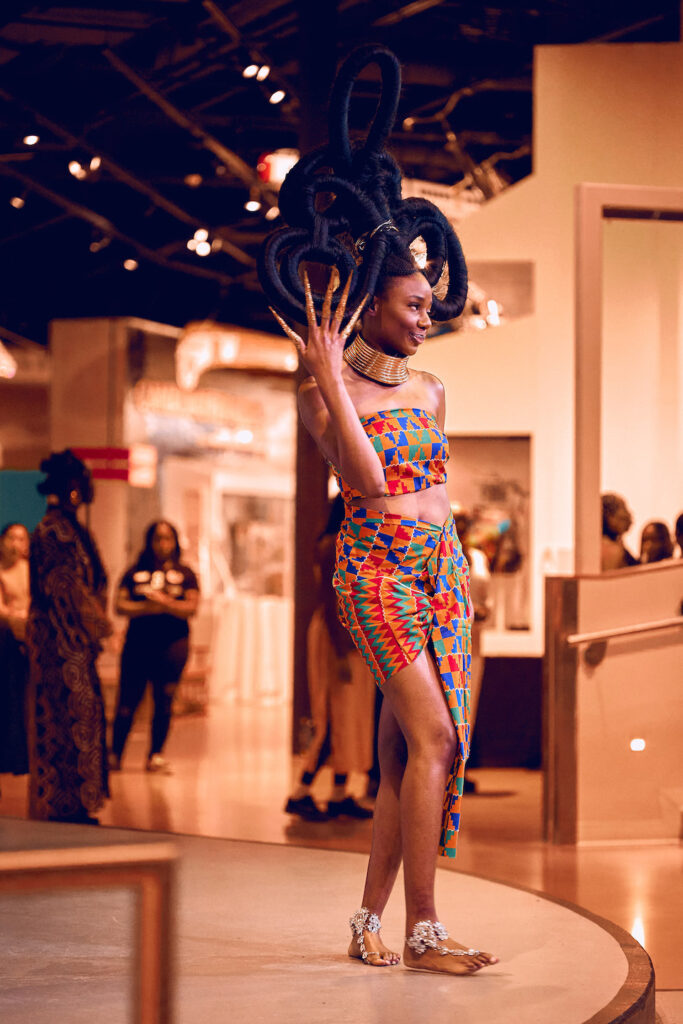
Hair art by Empress Charifa at Crépu, Feb. 4, 2024. Photo: Tani Olorunyomi
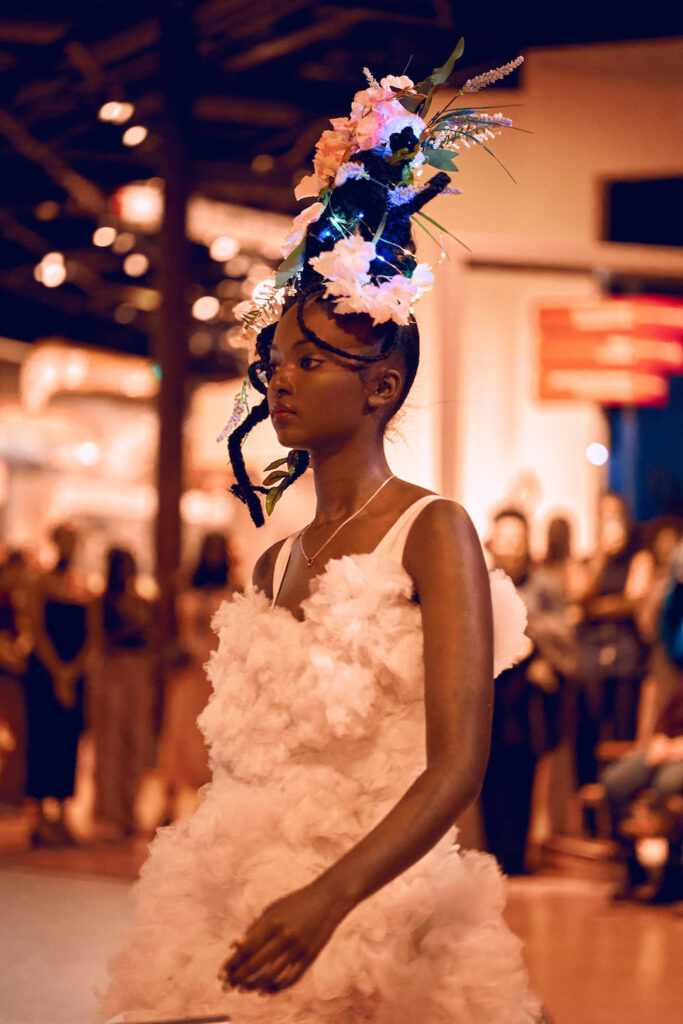
Hair art by DRS Anointed Spa at Crépu, Feb. 4, 2024. Photo: Tani Olorunyomi
Delize Scott of DRS Anointed Spa took inspiration from her grandmother’s botanical garden to create her hair pieces for the show. The leaves and butterflies adorning the braided sculptures symbolize rebirth and transformation.
With more than 10 years in the industry, Scott knows how to make an entrance with her hairstyles. “Hair speaks volumes. When you walk in a room, it speaks for you before you even speak,” she says.
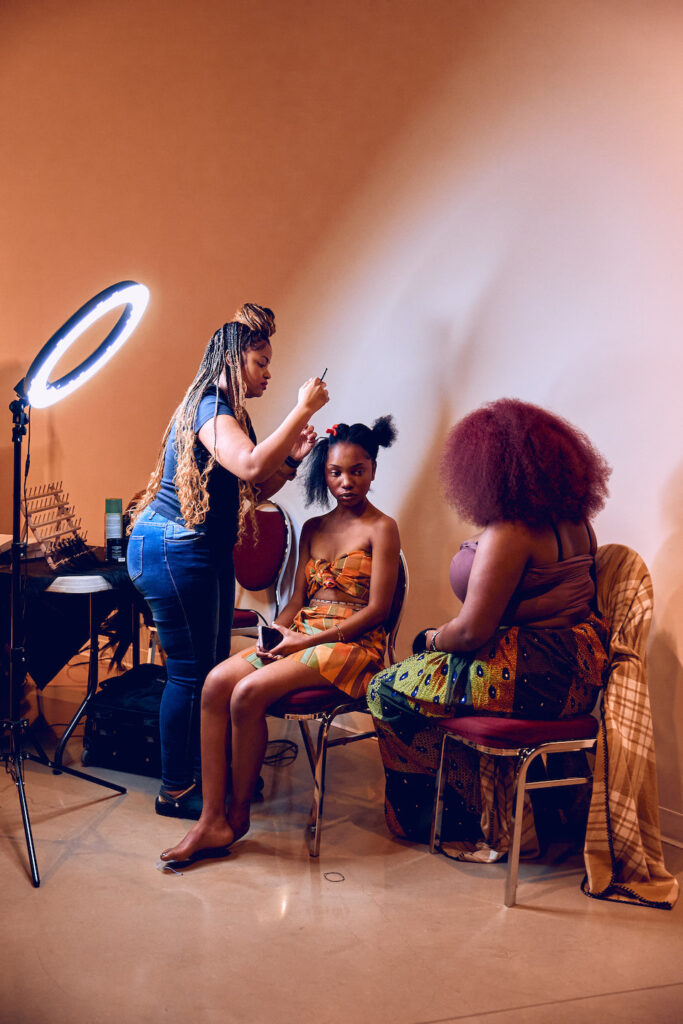
Live hair braiding at “Crépu.” Photo: Tani Olorunyomi.
On display were three pieces created by Lynn Mona from Lynn + Can + Braid, a professional hair braider and fibre artist.
“I wanted to showcase the ingenuity of Black women and Black people when it comes to hair,” she told us.
She knitted a balaclava with kanekalon fibre using braiding techniques and a veil made of Senegalese twist. Yet Mona doesn’t believe she’s making hair braiding “more” artistic. The process of styling Black hair, she says, is inherently artistic: “I’m using the same techniques that we use to do our hair to create something else.”
“Crépu’s” success is in its ability to make bold statements with few words. It takes a hors pair level of dedication and attention to detail to curate a show that’s coherent, visually pleasing, and impactful.
Sharlène Clarke and Sandra Ngenge Dusabe operate with their audience in mind. For example, as Nid D’oiseau, a short film by Nadia Louis-Desmarchais, played, the room audibly flinched at the sound of a sizzling hot flat iron pressing against tangled coils and the sight of a “Just For Me” perm box.
But most importantly, both organizers are committed to centring the beauty, creativity, and opulence of Black hair and Black people.
This post was originally published on this site be sure to check out more of their content.



